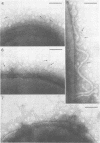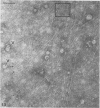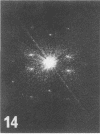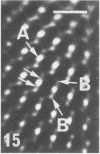Abstract
The morphology of cells and the hemagglutinogens isolated from cultures of Bordetella pertussis, Bordetella bronchiseptica, and Bordetella parapertussis were studied by electron microscopy with the negative-staining technique. Cells of all three species had long, thin (3 nm thick), peritrichously arranged fimbriae on the cell surface. Similar structures were found in purified hemagglutinogen preparations together with shorter fimbrial structures 3 nm thick and from 40 to 100 nm long. In one experiment, long, thin fimbriae isolated from B. pertussis were found to be arranged in a crystalline structure on the specimen grid after negative staining. Optical diffraction analysis with a filtering technique performed on micrographs of these structures revealed 12.5-nm-long substructures within individual fimbriae. Further analysis resolved each of these structures into three globules, a central globule 3.5 nm in diameter and two diametrically opposed globules 2.5 nm in diameter. Based on this substructural composition, it is suggested that subunits of the individual fimbriae are connected by fragile regions. The presence of such regions would explain the size heterogeneity of the filamentous structures observed in preparations of hemagglutinogens isolated from cultures of B. pertussis and B. bronchiseptica. The concept that the short filamentous structures present in purified preparations of hemagglutinogens originate from the surface fimbriae present on the cells is supported.
Full text
PDF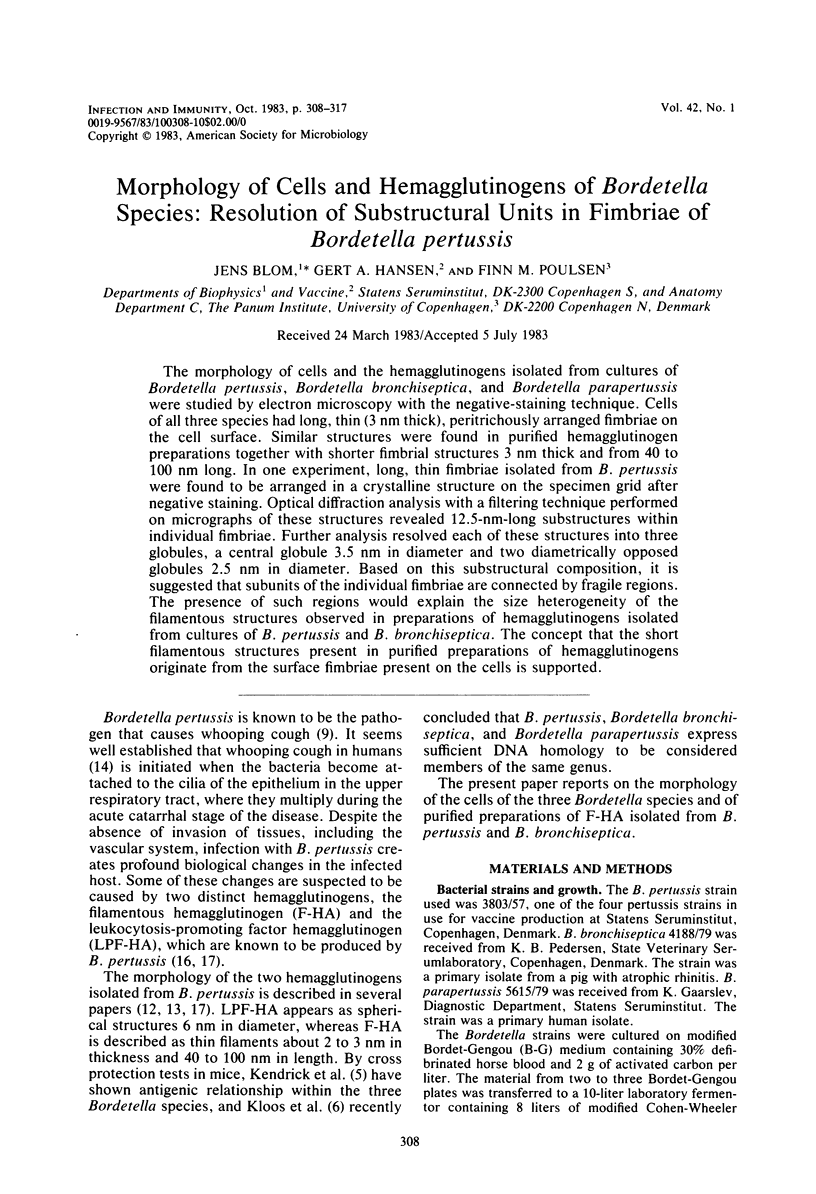
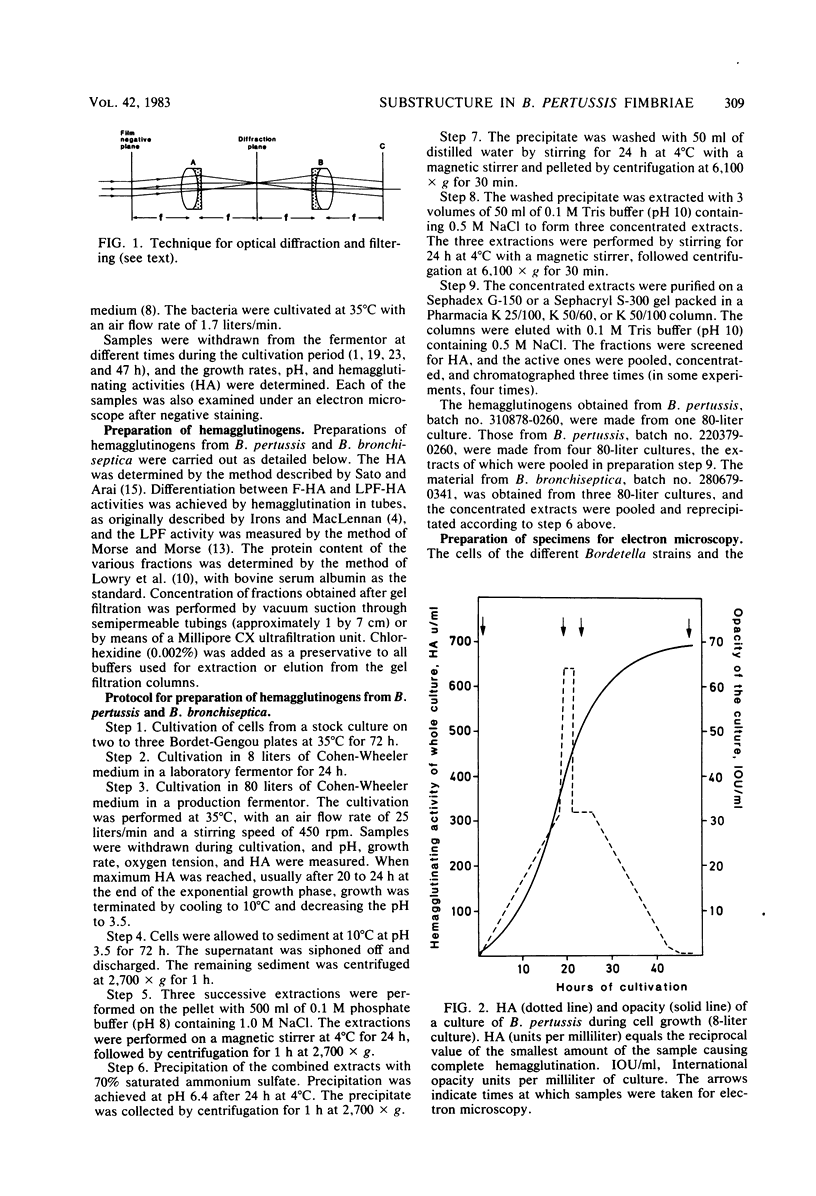
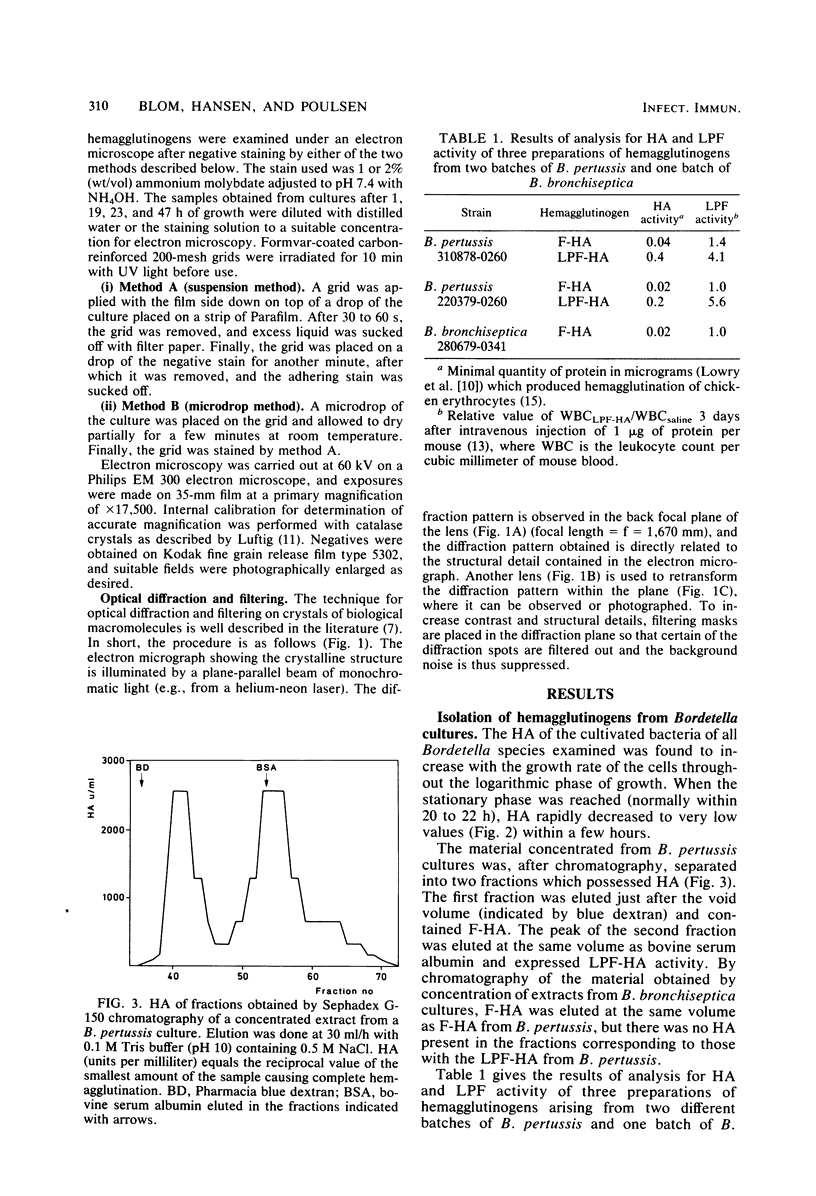
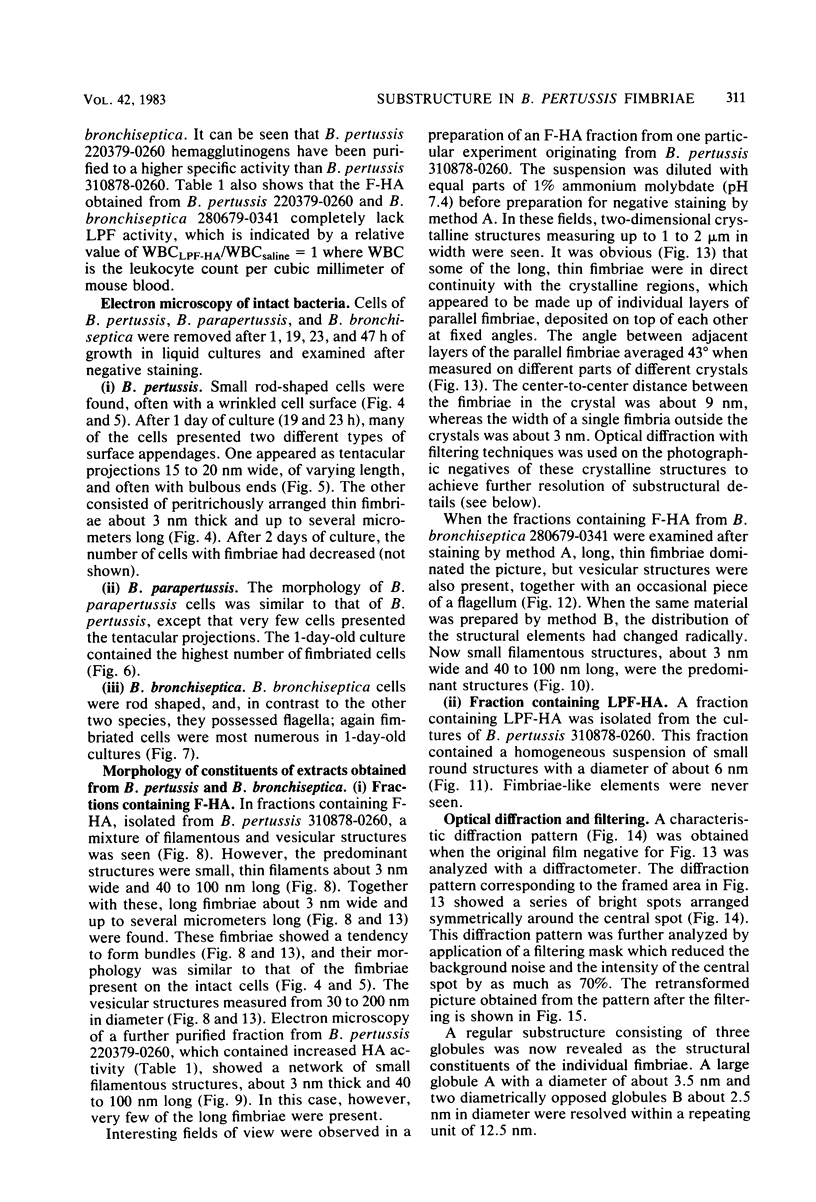
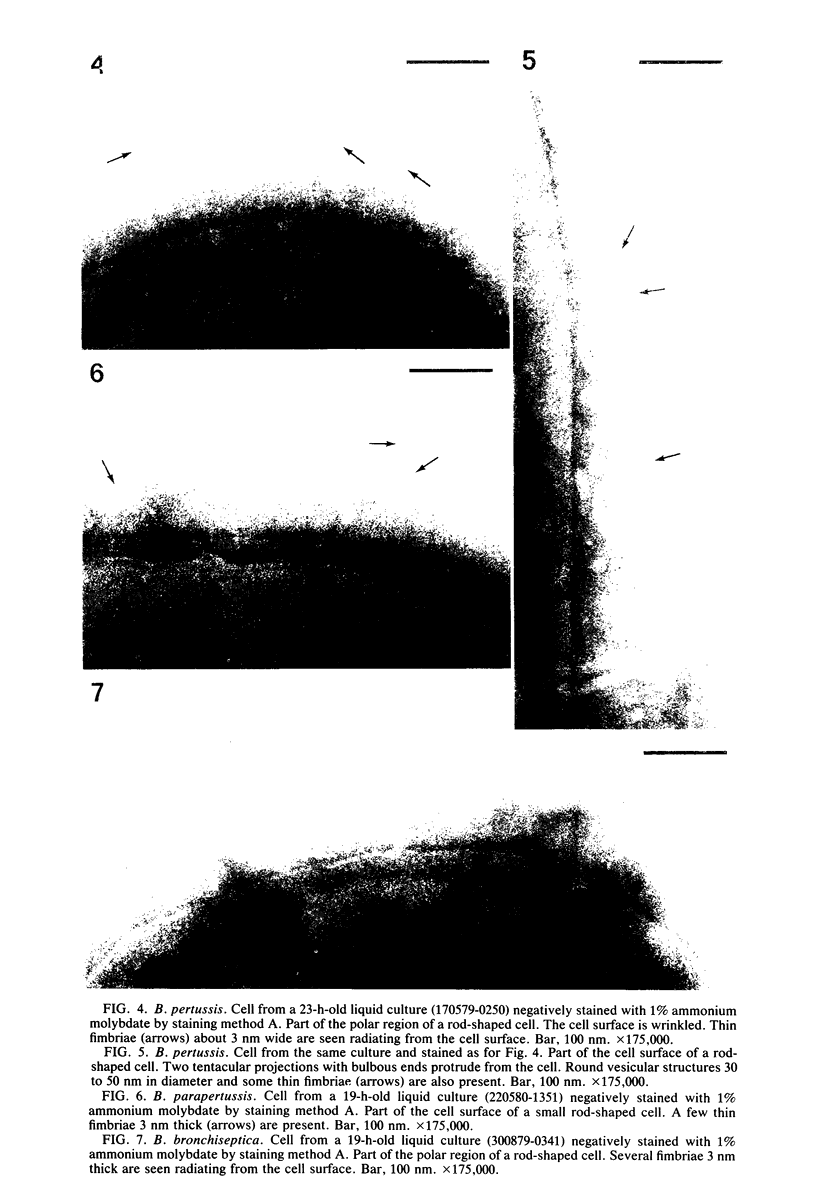
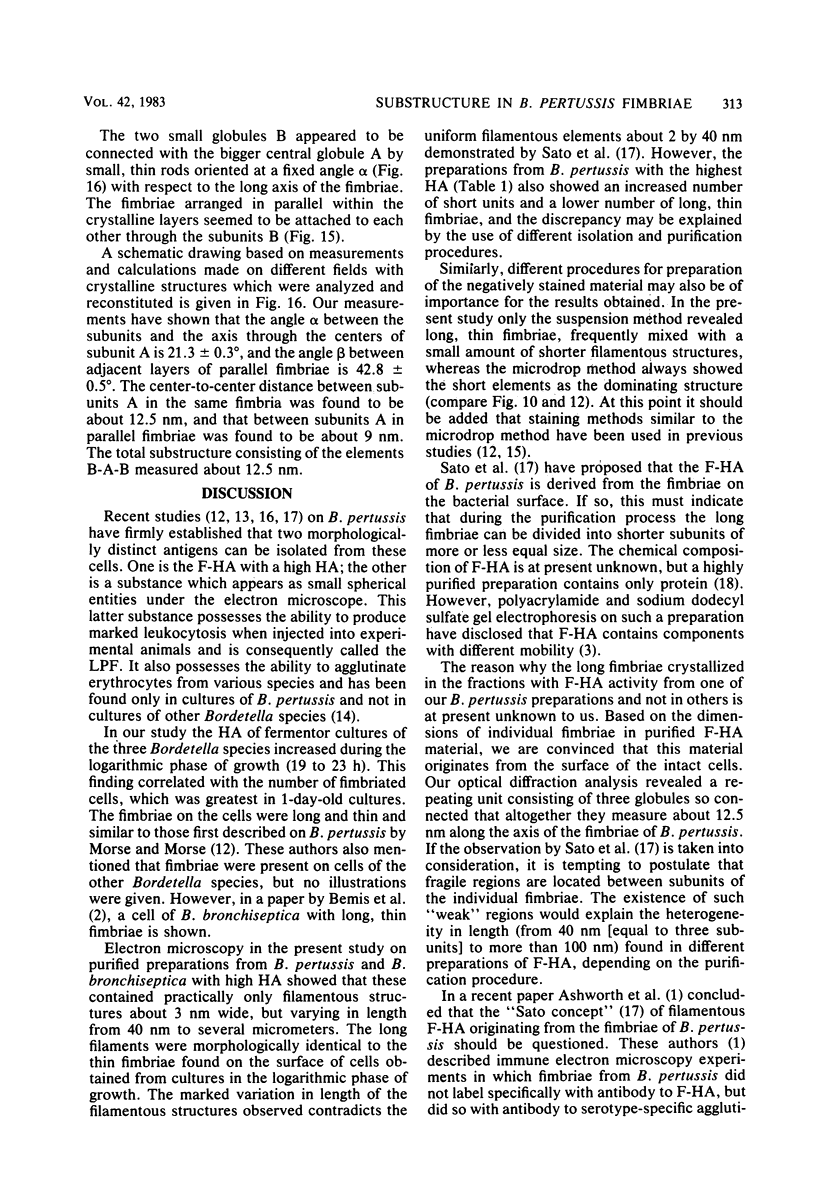
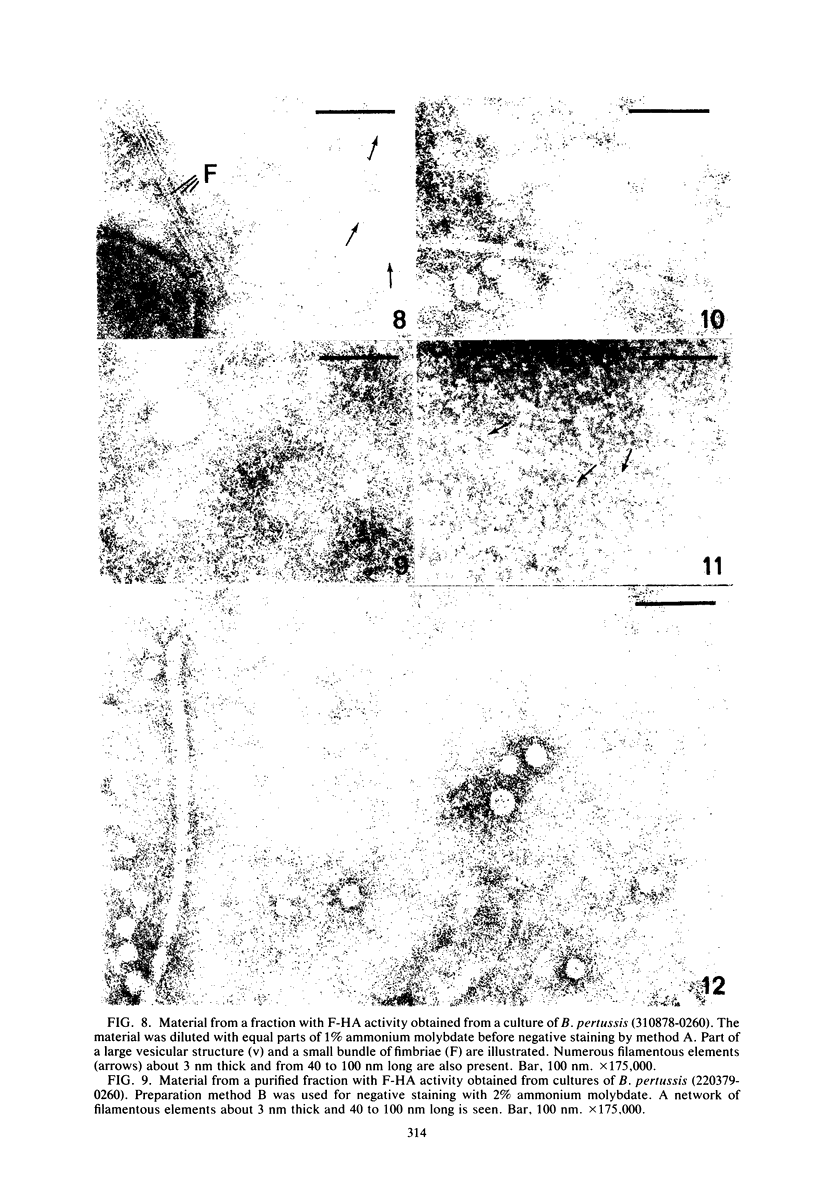
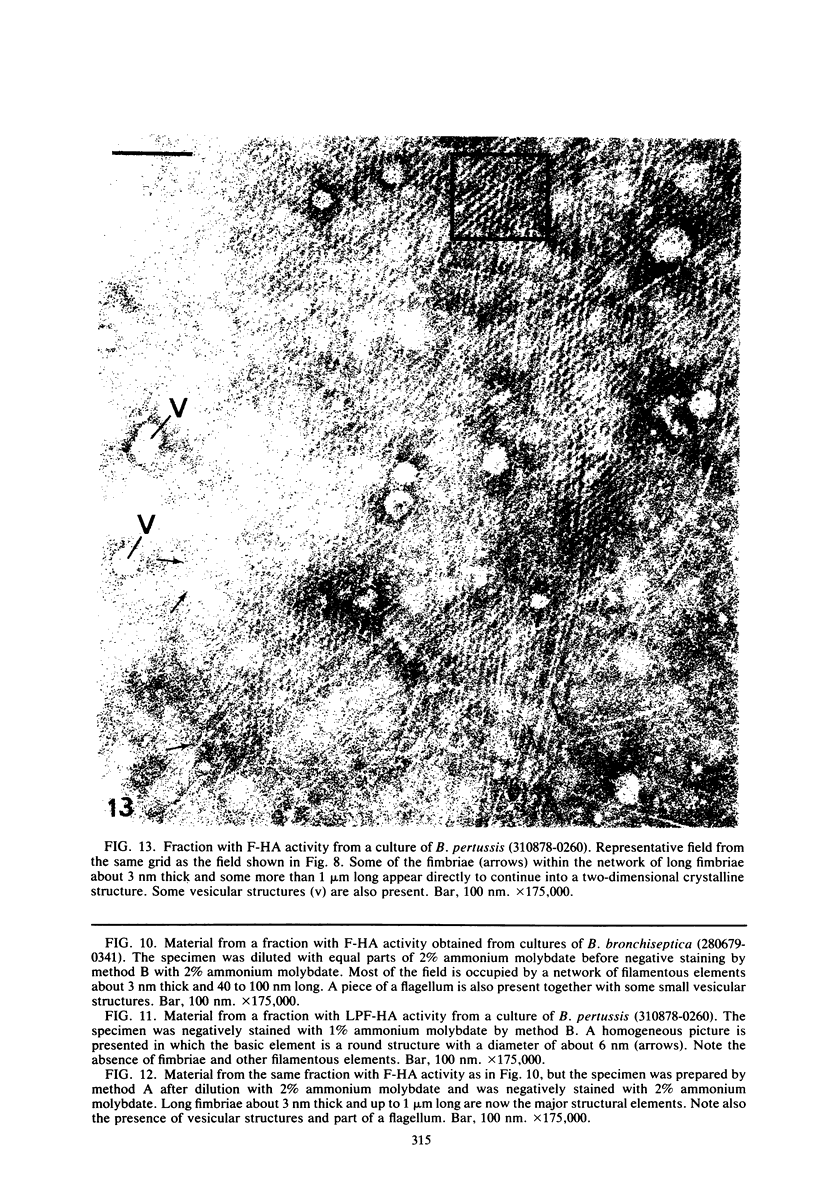
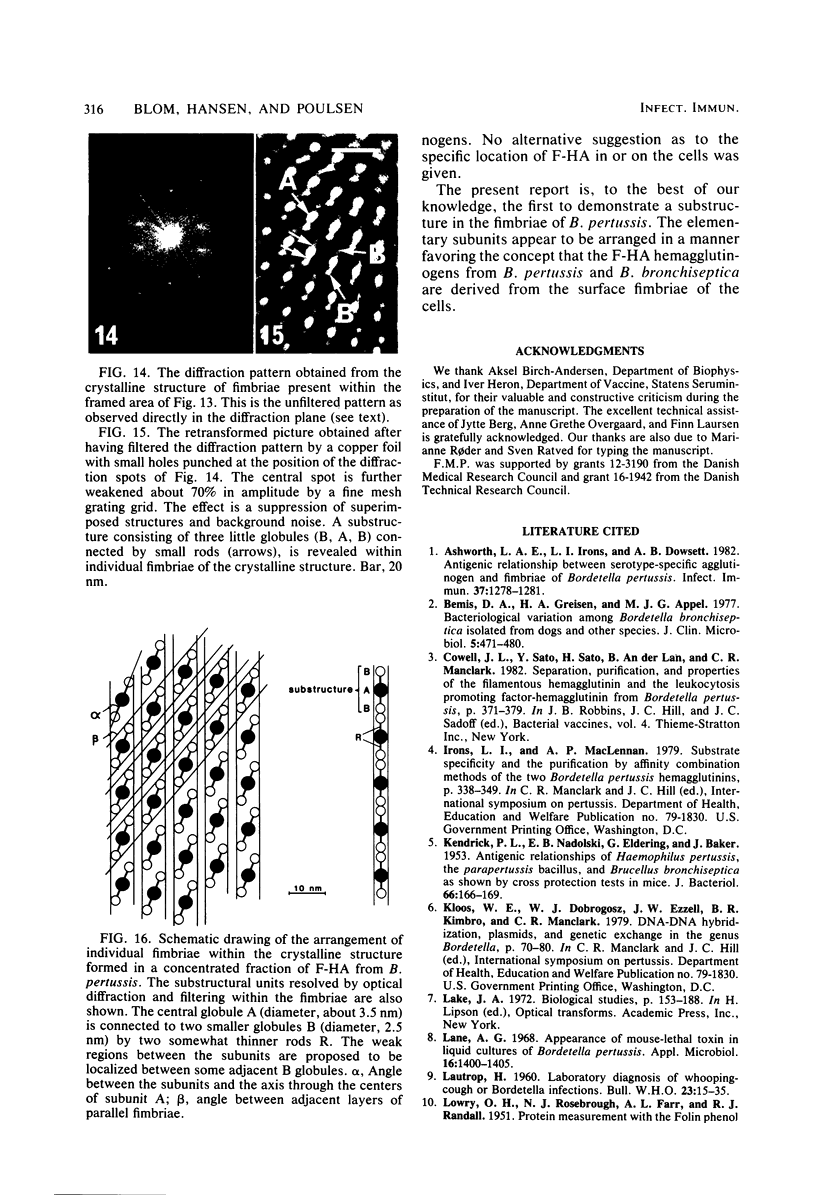
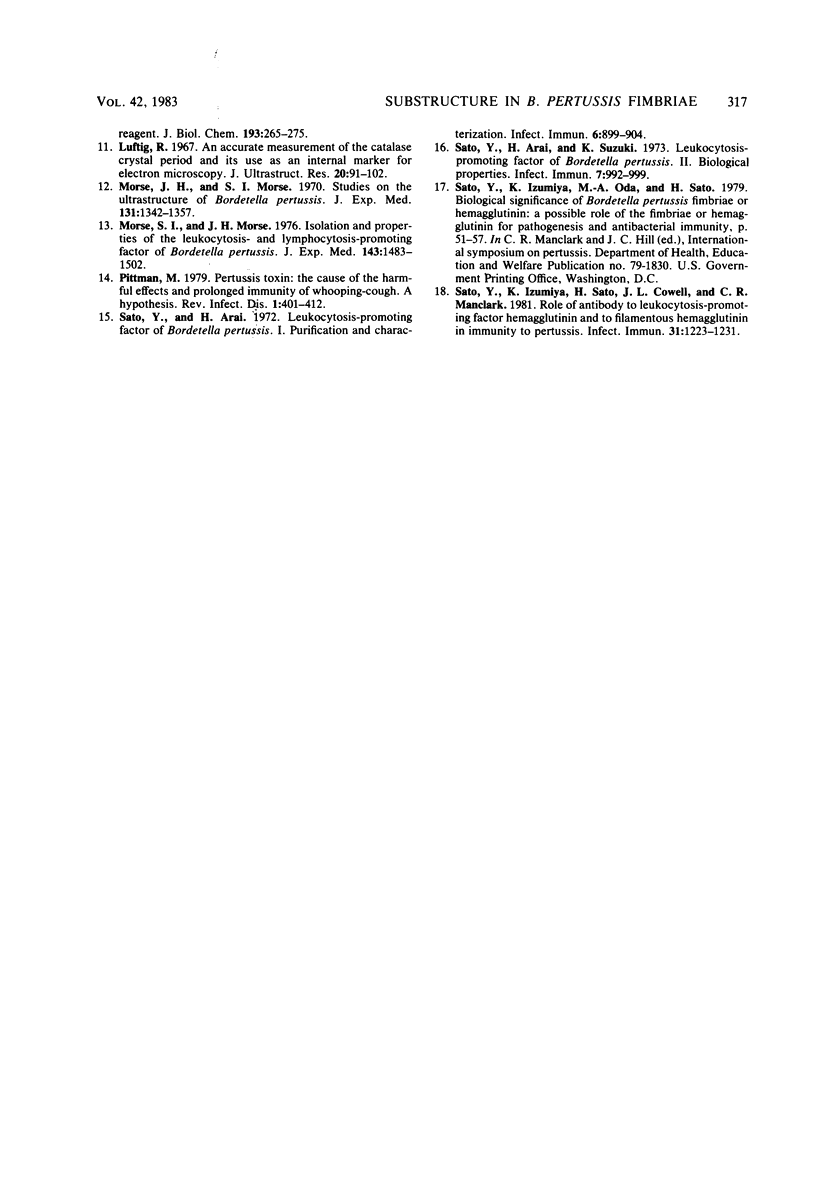
Images in this article
Selected References
These references are in PubMed. This may not be the complete list of references from this article.
- Ashworth L. A., Irons L. I., Dowsett A. B. Antigenic relationship between serotype-specific agglutinogen and fimbriae of Bordetella pertussis. Infect Immun. 1982 Sep;37(3):1278–1281. doi: 10.1128/iai.37.3.1278-1281.1982. [DOI] [PMC free article] [PubMed] [Google Scholar]
- Bemis D. A., Greisen H. A., Appel M. J. Bacteriological variation among Bordetella bronchiseptica isolates from dogs and other species. J Clin Microbiol. 1977 Apr;5(4):471–480. doi: 10.1128/jcm.5.4.471-480.1977. [DOI] [PMC free article] [PubMed] [Google Scholar]
- KENDRICK P. A., NADOLSKI E. B., ELDERING G., BAKER J. Antigenic relationships of Haemophilus pertussis, the parapertussis bacillus, and Brucella bronchiseptica as shown by cross protection tests in mice. J Bacteriol. 1953 Aug;66(2):166–169. doi: 10.1128/jb.66.2.166-169.1953. [DOI] [PMC free article] [PubMed] [Google Scholar]
- LOWRY O. H., ROSEBROUGH N. J., FARR A. L., RANDALL R. J. Protein measurement with the Folin phenol reagent. J Biol Chem. 1951 Nov;193(1):265–275. [PubMed] [Google Scholar]
- Lane A. G. Appearance of mouse-lethal toxin in liquid cultures of Bordetella pertussis. Appl Microbiol. 1968 Sep;16(9):1400–1405. doi: 10.1128/am.16.9.1400-1405.1968. [DOI] [PMC free article] [PubMed] [Google Scholar]
- Luftig R. An accurate measurement of the catalase crystal period and its use as an internal marker for electron microscopy. J Ultrastruct Res. 1967 Sep;20(1):91–102. doi: 10.1016/s0022-5320(67)80038-8. [DOI] [PubMed] [Google Scholar]
- Morse J. H., Morse S. I. Studies on the ultrastructure of Bordetella pertussis. I. Morphology, origin, and biological activity of structures present in the extracellular fluid of liquid cultures of Bordetella pertussis. J Exp Med. 1970 Jun 1;131(6):1342–1357. doi: 10.1084/jem.131.6.1342. [DOI] [PMC free article] [PubMed] [Google Scholar]
- Morse S. I., Morse J. H. Isolation and properties of the leukocytosis- and lymphocytosis-promoting factor of Bordetella pertussis. J Exp Med. 1976 Jun 1;143(6):1483–1502. doi: 10.1084/jem.143.6.1483. [DOI] [PMC free article] [PubMed] [Google Scholar]
- Pittman M. Pertussis toxin: the cause of the harmful effects and prolonged immunity of whooping cough. A hypothesis. Rev Infect Dis. 1979 May-Jun;1(3):401–412. doi: 10.1093/clinids/1.3.401. [DOI] [PubMed] [Google Scholar]
- Sato Y., Arai H. Leucocytosis-promoting factor of Bordetella pertussis. I. Purification and characterization. Infect Immun. 1972 Dec;6(6):899–904. doi: 10.1128/iai.6.6.899-904.1972. [DOI] [PMC free article] [PubMed] [Google Scholar]
- Sato Y., Arai H., Suzuki K. Leukocytosis-promoting factor of Bordetella pertussis. II. Biological properties. Infect Immun. 1973 Jun;7(6):992–999. doi: 10.1128/iai.7.6.992-999.1973. [DOI] [PMC free article] [PubMed] [Google Scholar]
- Sato Y., Izumiya K., Sato H., Cowell J. L., Manclark C. R. Role of antibody to leukocytosis-promoting factor hemagglutinin and to filamentous hemagglutinin in immunity to pertussis. Infect Immun. 1981 Mar;31(3):1223–1231. doi: 10.1128/iai.31.3.1223-1231.1981. [DOI] [PMC free article] [PubMed] [Google Scholar]



